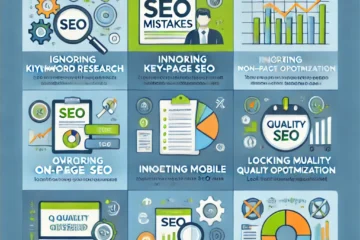What is webpage click through rate? Is the amount of users who click on a webpage link to the number of total users who viewed the webpage. In the digital age of marketing, the whole focus for many is on how many people are searching for a certain term.
While this seems like a normal strategy to adhere to, it ultimately is loaded with problems. First off, for SEO click through rate matters more than keyword rankings. A website isn’t seen as relevant just because it uses keywords that relate with the topic searched.
Search engines MUST know what users actually use and what they don’t in order to deem a webpage really helpful. Otherwise even with advanced algorithms, it’s a guessing game. Knowing which webpages, users were able to get the information they needed is kind of important if you’re a search engine delivering results.
A good search engine might even want to show webpages that satisfy the users search more often for related terms as well. So understanding what makes a search engine result more enticing to click on is just good on page SEO. It’s not just about meta title optimization or website indexing, much more goes into click through rate.
Are Your Keywords Really Ranking?
Keyword rankings are often misleading if you don’t know how a search engine delivers results. Many times the keyword searches people do are specifically personalized to that user. What this means is everything from what is shown to the location will be customized to the user’s data. In fact location alone will change even personalized searches, so the search results from 500 feet away will change slightly for many purchase related searches.
If you want to still logged in you can add “&pws=0” to the end of the URL string, but this will only remove some personalization from the search results. A good way to make sure you even have keywords ranking where you think is to 1st try: “incognito mode”
The keyword search volume is often misleading to focus on as a metric for focusing on a target keyword. Traffic isn’t the prime directive of a website, unless that website’s mission is to just be seen and often not really heard. The scary side of focusing on keyword search volume is if it’s a general keyword it’s going to have a higher search volume.
So the more specific longtail keyword gets the less search volume there is. Meaning there is a good likelihood if a high search volume keyword is used, it’ll be harder to compete for traffic that most likely won’t convert. And choosing a more specific longtail keyword requires good research.
Keyword Research Improves CTR%
Websites need a good keyword research plan in order to ensure efficient use of website restate. If no research is done and the wrong keywords are focused on, that means no traffic unless a lot of money is spent on paid advertising. Keyword research ensures content relevancy which is part of what’s even needed to have a search result clicked on.
The other part is user trust which is conveyed by “looking the part” in SERPs. This is where things like meta title and meta description play a part in. Meta titles are the 1st thing a user sees when they get the search results. One thing many want to know is do they have the source of the information, so having a brand present is important. The other is simple the keyword the user searched for, is it in the title somehow and is it relevant?
If a search result doesn’t look relevant, despite the search engine showing it, users aren’t going to waste their time on it. This is half the reason Google bolds keywords in SERPs, they saw users were looking for them anyways. Having a meta description that is just the standard 1st line of the paragraph doesn’t cut anymore, even if it is relevant.
Users have learned the marketing tactics of automation and the quality that often goes with it and don’t trust it as much. This is why creating your own meta descriptions will ultimately gain some quick attention. Including a good summary of what you think your user was looking for and how that webpage will help them is one of the best ways to entice a click.
Appearance Is Everything
As mentioned above, if the listing in SERPs looks automatic or spammy, there is a good chance that listing isn’t seeing a click. Ranking a website for keywords isn’t hard anymore, that’s part of the problem SEOs have. Convincing a client, boss, or even coworker that keyword position 1 isn’t good if it’s for ” Motorcycle Sales ” and they sell scooters.
Things like ranking for the competitors brand name, using doorway pages, or stuffing keywords in the meta title just look bad to users when they search. Not to mention can ruin brand awareness in general if not careful.
Just being authentic is often the best way to entice users to click on a search result. Utilize the meta description as a means to further explain the webpage and how the information inside can help a user with their search.
If the sole mission is to get calls, by all means throw a TRACKABLE phone number in there with a SERPs or Organic tab label. Treat the SERP listing as an organic billboard, targeted specifically at brand users. Only focusing on content and wording that targets the users most likely to engage with the website will help CTR%.
User Intent Is Still Important
Having website traffic is an exciting thing to see, however if that traffic doesn’t engage with webpages it’s bittersweet. Same goes for an increase in click through rates but no goal conversions as a result. This would indicate a lack of focus with users targeted.
Somewhere on the website users are being introduced to the website that aren’t likely to do anything once they land on the website. It’s important to look at the content a website is releasing and make sure it relates to the types of users targeted. Otherwise there is no focus and instead of an organized marketing plan, there’s a digital museum.
Ask the right questions about the users who engage best with the website, and make sure that’s being conveyed in SERP listings. User intent optimization isn’t just about how the user interacts with the website, it’s how the content resonates with the user. Intent is conveyed in how the keyword is used in the long tail keyword.
Understand how to look for those clues and how to read analytical data to break it down even further, will help to optimize webpages further for user engagement. Heatmapping can help as well for organic listings to see just how the webpage helps users who engage. So a better optimization of webpage content can be done to increase what was working already.
Not sure about your webpage click through rate?
Contact SEOByMichael and schedule an SEO audit consultation that can highlight some issue seen.


